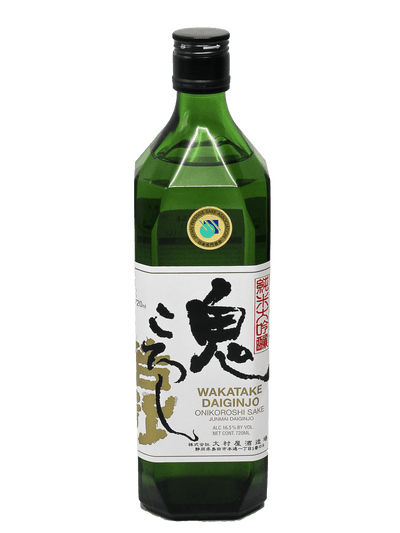What do you Mean, Extra Brut? Sweetness in Sparkling Wine

Sparkling wine made by what’s known as the “traditional method” or the “Champagne method” will arrive, after you buy wine online, in a number of potential sweetness levels, or, to be more precise, amount of added sugar before final bottling, or residual sugar of the finished wine. This technique is known as “dosage” using liqueur d’expédition.
Understanding this requires delving into the traditional method, which involves the interplay between sweetness and acidity. The traditional method is used not only in Champagne, but also in the Cava appellations of Spain and the Franciacorta region of Italy, among others. It’s a painstaking process, which helps explain the sometimes high prices of these sparklers (though Cava offers a lot of value wines). The steps in the process include making the base wine in the same way as many other white or rose wines. This can be followed by blending the base wines with reserve wines, which the winemaker keeps on hand from past vintages. This is common in Champagne, less so in Cava. The wine is bottled; then comes the tirage, where sugar and yeast are added to induce a second fermentation in the bottle. This results in lees, which is sediment contain a large proportion of dead yeast cells after fermentation ends. The wine is aged “on the lees” for a period of time, which can vary depending on the desired final wine quality. During this time, the bottle experience riddling, which involves dislodging the sediment by turning the bottle so that it settles in the bottle’s neck. This used to all be done by hand, though many wineries now use machines.
After the sediment is settled comes disgorgement. Here, the wine in the bottle neck is first frozen and then opened. With explosive force of the captured CO2 from the second fermentation, a pellet of frozen wine and the concentrated sediment is expelled. Now we get to the dosage, which will determine if the wine is going to be Extra Brut or Demi-sec, Sec or Brut Nature. Which do you like when you buy wine? That can depend, too, on the occasion: as an aperitif, with food, for dessert?
Here wine is blended with sugar and added to the bottle. There’s no fermentation, so the added sugar remains unconverted in the wine. The bottle is corked with a wire cage and ready for sale. All this occurs very quickly.
That, therefore, is how traditional method sparkling wines get their different sweetness levels. But what are they? First, under European Union law, the label must tell you. This is called residual sugar (RS) and it’s measure per liter of wine. You will find the amount and a name, and there are ranges:
- Brut Nature 0-3 g/L residual sugar (RS)
- Extra Brut 0-6 g/L RS
- Brut 0-12 g/L RS
- Extra Dry 12-17 g/L RS
- Dry 17-32 g/L RS
- Demi-Sec 32-50 g/L RS
- Doux 50+ g/L RS
For DO Cava wines, it’s fairly similar:
- Brut Nature: 0-3 g/L RS
- Extra Brut: 3-6 g/L RS
- Brut: 6-12 g/L RS
- Extra-Seco: 12-17 g/L RS
- Seco: 17-32 g/L RS
- Semi-Seco: 32-50 g/L RS
- Dulce: 50+ g/L RS
Champagne is located in northern France, not far from Chablis and Paris, and it’s cool even in summer and certainly in fall; so getting grapes to ripeness and accompanying high sugar levels can be a struggle for winegrowers. These wines maintain fairly high levels of acidity. The dosage can help lend the wines needed balance, but residual sugar adjustments also appeal to the tastes of certain world regions. Another reason for having a range of sweetness levels is to accompany different occasions, meals, or courses more adequately for supreme enjoyment of the wine. Champagne remains the royalty of sparkling wines.
Cava is produced across Spain, but most in Catalunya, which has a Mediterranean climate as opposed to the more continental climate of Champagne. Grape ripeness is not such as issue there, and it’s often more a question of keeping the desired acidity for balance, harvesting at the correct time. Cava is experiencing a renaissance right now. Sommeliers worldwide are recommending superb food pairing experiences with Cava by venturing beyond traditional pairings. This includes pairing sparkling wines—whether its Champagne, Cava, or Franciacorta—with every course, rather than just at a meal’s commencement or purely for celebrations. “Wine pairings based on the intricacy of Cava’s structure and complexity can range anywhere from preserved olives to fresh fruit to grilled spiced lamb to creamy desserts,” says wine writer Chantal Tseng. This includes sparkling wine with different levels of sweetness through the meal sequence.
Five wine to try from Bottle Barn
Here’s some suggestions of wines with different levels of dosage. It’s worthwhile trying a few with different dosage side by side!
- Mercat Cava Brut Nature
- 2011 Jean Vesselle Brut Prestige Millesime Champagne
- Dibon Ice Demi-Sec Cava
- Korbel Extra Dry from California
- Bellavista Alma Gran Cuvee Franciacorta DOCG Brut
I hope you enjoyed learning about dosage and the terms for different sweetnesses in sparkling wine. Read other articles on wine from Bottle Barn!
By Charlie Leary


















Leave a comment